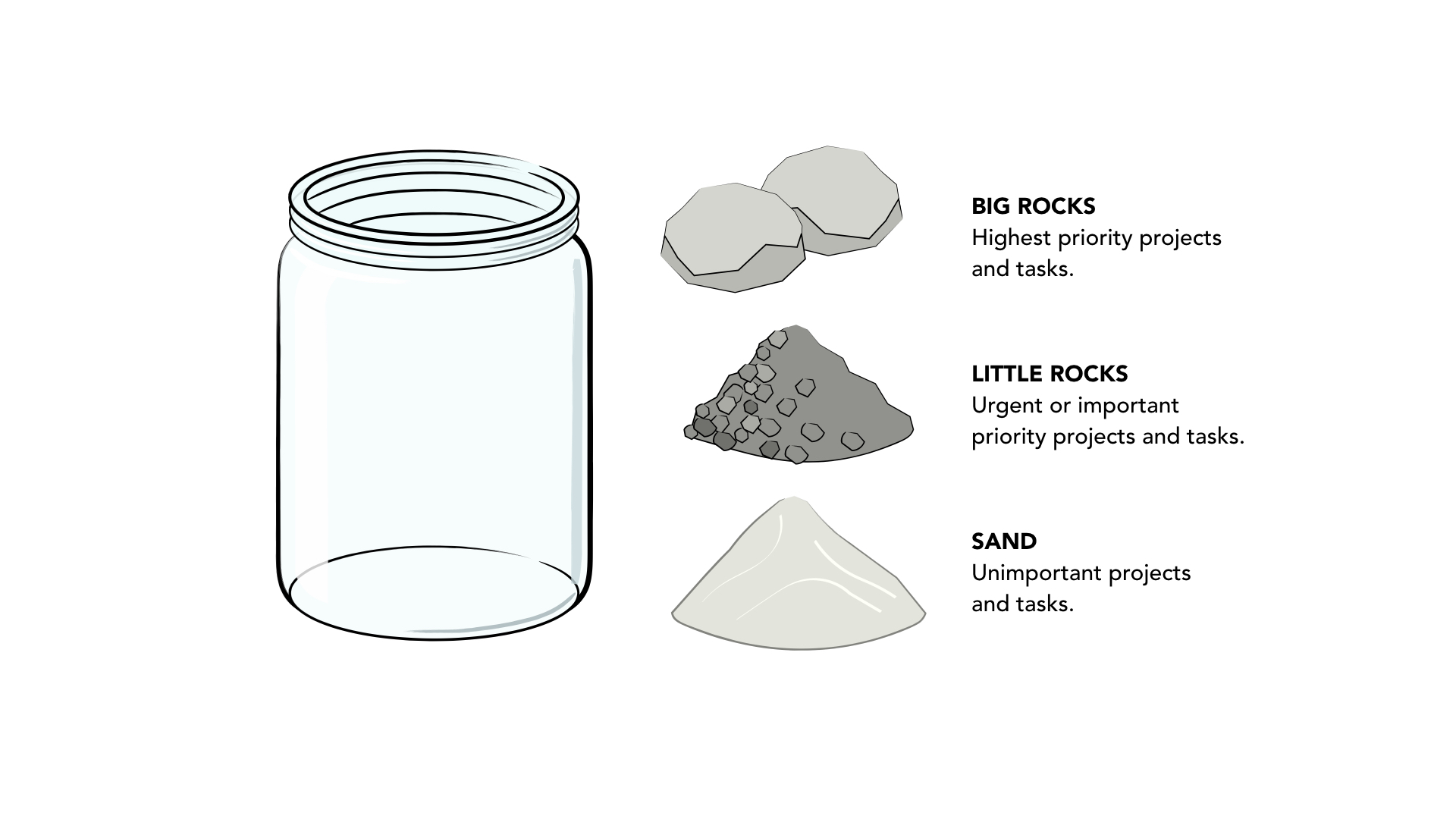

Then he produced a half-dozen fist-sized rocks and carefully placed them, one at a time, into the jar. Standing in front of a classroom filled with self-motivated over-achievers, he pulled out a one-gallon, wide-mouthed Mason jar and set it on a table. Here is the Big Rocks story as I have heard it most often:Īn expert on the subject of time management was lecturing to a group of business school students, and to drive home a point he used an illustration those students will probably never forget. Stories can be powerful metaphors, and once you’re heard this one you may find it easier and more intuitive to keep your Big Rocks front of mind. The origin of the “Big Rocks” concept is unknown, but it was popularized by Stephen Covey in his book The Seven Habits of Highly Effective People. (Hint: if someone asks you what your Big Rocks are and you can’t answer immediately, you’re not doing this right.) Use your Big Rocks list as a weekly guide for where you (and your team) should be focusing the majority of effort and energy. Be politely firm about turning down or removing yourself from projects or tasks that will not advance the critical priorities. Share your Big Rocks with your team and all your important stakeholders. Set clear goals for those 4-5 Rocks-and be honest about how you will measure success. (As a check, ask yourself “What are the handful of things I’ll get done this year that will make everyone say ‘this was a great year!’ when December comes around?”) As you think about this year, be clear and explicit about your Big Rocks, the 4-5 (maximum) things you and your organization need to accomplish over the next 12 months.

If it seems like you’re busier and busier each year but somehow less productive, it’s time to break out of the cycle. Somewhere along the way they changed the term to “Boulders” and I didn’t bother to correct them since they clearly owned it and were doing it so well! For over a decade I worked with the leadership of a high-growth company (average year-over-year revenue increases of 15-20%) who made “Big Rocks” a part of their corporate culture and operating processes. Ask any leader or creator you admire, from CEOs to entrepreneurs to artists, how she keeps what’s really important on the front burner, and you’ll hear many different tricks, tools, and “hacks.” How you develop your Big Rocks isn’t as important as doing it. I’ve seen many different approaches so I’m not going to try to prescribe a single way of doing it. Successful people and organizations always find a way to keep their focus on the most things. You are busier. But are you more productive? The concept of “work-life balance” becomes background noise. You work longer hours, and thanks to the wonders of technology you bring your work more and more into your personal time. You try to be a good corporate citizen: you help out when asked (and even when not asked), you seek ways to add value, and you’re always willing to go the extra yard. And it seems like some problem or unexpected issue pops up every week. As a senior executive you have a lot on your plate, and a large number of people demand your time, attention, labor, and share of mind. However, it turns out that prioritizing can really hard.


 0 kommentar(er)
0 kommentar(er)
